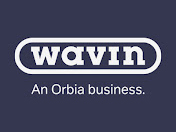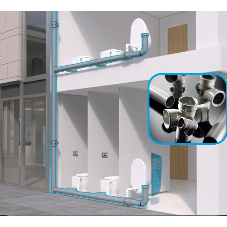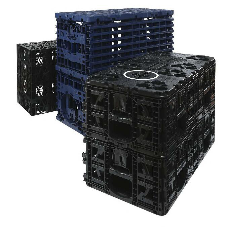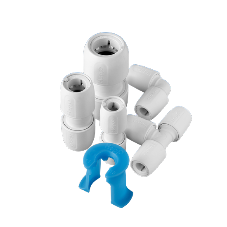The UK’s 28 million homes produce around 14% of the country’s annual greenhouse gas emissions, with the construction industry contributing a further 11.4 million metric tons of carbon dioxide emissions. These figures are adding to the mounting public and regulatory pressure on developers to provide greener housing options and adopt more sustainable building practices.
Legislation changes developers need to be aware of
Aiming to ensure future homes produce 75-80% fewer carbon emissions than those built under past regulations, the Future Homes and Buildings Standard will be published in 2024 before coming into force in 2025. In England, however, progress towards these standards is already well underway, and changes to Part F, L, O and S of the Building Regulations came into force in June 2022.
Alongside these developments, Schedule 3 of the Flood and Water Management Act 2010 is set to come into effect in England in 2024. A step-change for drainage systems in England, it will make sustainable drainage systems (SuDS) a mandatory requirement for all new developments over 100sq/m. In another significant change to working practice, developers will likely work alongside a SuDS Approval Body (SAB) within their local authority to design and produce appropriate SuDS that the local authority will then adopt.
Key sustainable development solutions
Setting a sustainability precedent, these legislative changes highlight the importance of prioritising futureproof solutions and strategies in the UK housing construction sector. Wavin have a range of solutions to help keep new housing developments ahead of the curve to create sustainable, futureproof homes.
Energy-saving indoor climate solutions
Part F of the Future Homes and Buildings Standard requires a serious rethink of typical domestic heating and ventilation systems. Well-insulated and airtight homes should also prioritise Mechanical Ventilation Heat Recovery (MVHR) systems to maximise sustainability benefits. Reducing indoor pollutant levels and protecting against damp, MVHR systems also support heat pumps to operate more efficiently at lower temperatures.
“An MVHR is critical for creating efficient, futureproofed homes. The continuous and controlled ventilation rates of MVHR reduce heating demand, as well as meeting all regulations. A heat pump combined with underfloor heating is also a viable way of providing a level of heat that today’s home buyers will find comfortable.” Anthony Croke, Territory Product Manager for Indoor Climate Solutions, Wavin.
A vast range of SuDS options
Once Schedule 3 is implemented in England, SuDS will become a legal requirement on almost every new housing development, and their sustainability benefits are significant.
Already mandatory in Wales, SuDS are having a remarkable impact on the built environment. They can take the pressure off the combined drainage network and remove pollutants and microplastics.
Recent research also reveals that buyers are willing to pay a premium for new homes that incorporate SuDS within the wider development. A win-win for buyers and developers, a range of SuDS strategies including green roofs, permeable paving, swales, tree pits and attenuation tanks can be employed.
Tree retention strategies
Another feature high on UK home buyers’ lists is the presence of trees . Offering a range of sustainability benefits, and boosting health and wellbeing, trees improve air quality, moderate microclimates, and even attenuate water flow to reduce pressure on drainage systems. Compared to materials like asphalt, they can reduce run-off by as much as 80%, significantly contributing to flood prevention in urban areas.
But, retaining mature trees on new developments, and maximising their long-term environmental benefits, requires ongoing maintenance and a range of practical considerations. Root management solutions are essential to preventing ingress and the damage it can cause to underground pipes and nearby buildings. Simple solutions like Wavin’s RootSeal Tech nologycan help to prevent costly root ingress and effectively manage the risk of trees within new developments .
Building Information Modelling (BIM)
Hailed as ‘Britain’s key to Net Zero’, BIM is a sustainability game-changer which 75% of users agree is already having a positive impact for the environment.
“BIM is providing some major opportunities for the construction industry, including how to tackle the most pressing challenges of climate change that lie ahead - such as waste, energy consumption and resilience of the built environment.” (Adam Salt, Design Engineer and BIM Co-Ordinator, Wavin)
T hrough shared digital modelling, BIM optimises coordination between design and construction disciplines, streamlining planning, delivery and supply chain integration. BIM models mean designers can forecast conditions, test methodologies, and identify clashes early in the development process – helping them iron these out before construction begins. Then, during construction, BIM’s emphasis on exact products and measurements minimises waste. This ‘right-first-time’ approach supports modular construction methods and pre-fabrication practices proven to reduce construction waste by 80%, and concrete use by a third.
BIM’s whole-life modelling also realistically estimates the mechanical, electrical and plumbing performance of a building, taking into account factors like natural lighting, building occupancy, geographic climate and weather. With this information, it’s possible to optimise the building’s design and incorporate systems that significantly reduce electricity consumption throughout its life. Further checks can then be applied through features like ‘RuleCheck’ to ensure designs are compliant with relevant energy and environmental regulations.
Integrated Building Energy Modelling (BEM) applications can also be used to capture real-time data on energy use, indoor environment quality, emissions and even the payback period on energy saving measures. Applications like this may in time support property handover processes required by the Future Homes and Buildings Standard, proactively encourage homeowners to optimise energy usage and provide long-term value for facilities and life cycle management.
Environmental Product Declarations (EPDs)
Fabric-first guidance linked to the Future Homes and Buildings Standard means developers must demonstrate the quality and environmental impact of building products they use. A potentially arduous task, EDPs are a painless way to achieve this. They verify the sustainable value chain of a material and cover factors such as manufacturing information, life cycle, use and acquisition of raw materials, chemical composition and energy efficiency.
Increasingly used to support Net Zero targets and sustainability policies across Europe, EDPs will likely become standard in the UK over the coming years - helping developers demonstrate to regulators that they have strictly adhered to sustainability considerations. Wavin can provide EPDs for its products on request.
Renewable energy sources
In the UK, over one million homes are already generating their own electricity from either solar or wind power. Currently new build homes must pass SAP 10 and from 2025 new builds must pass SAP 11 with enhanced regulation requirements. There are several renewable energy sources for commercial homes and developments, but solar energy systems, mainly panels, are still the most common choice and are increasingly favoured for their ability to support electric vehicle charging. Smaller wind turbine systems are another option for homes and hydroelectric systems can be used in properties near to bodies of water.
As the grid decarbonises and the government further incentivises renewable energy, it’s likely there will be increased opportunities for developers to exploit larger scale, renewable energy sources that can’t be accessed at an individual building level.
Creating sustainable housing stock
As the reality of climate change hits home, and pressure from people and governments grows, housing developers need to take the initiative - reducing emissions and futureproofing new homes. As legislators increasingly turn their eye to this sector, keeping up with changing regulations will be a challenge. But it’s a learning curve that will pay dividends in the future, safeguarding the planet and ensuring that housing stock keeps pace with consumer demand.
Find out more about Wavin Indoor Climate Solutions for future-fit homes featuring market leading systems designed to work together including Comfia Underfloor heating, Ventiza Mechanical ventilation with heat recovery, Calefa heat interface units and Sentio full zone control.
Key solutions for futureproof and sustainable homes
| T | 0844 856 5165 |
|---|---|
| E | online.enquiry@wavin.com |
| W | Visit Wavin's website |
| Wavin Limited, Parsonage Way, Chippenham, SN15 5PN |
Products by this Company
Categories
BIM Residential buildings




